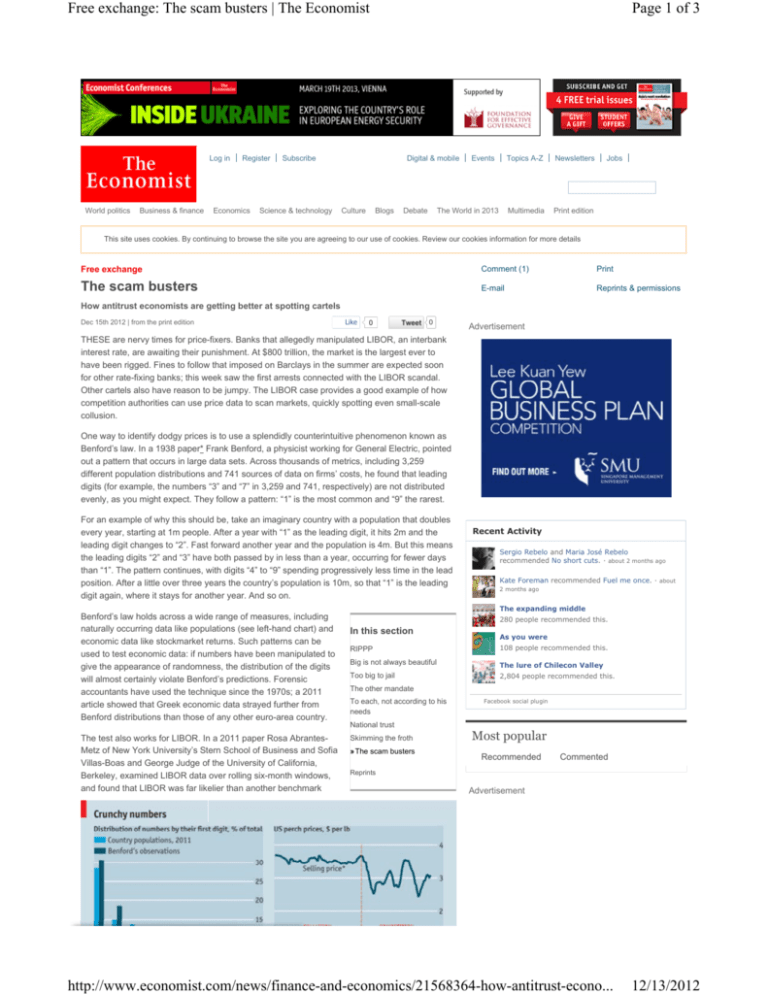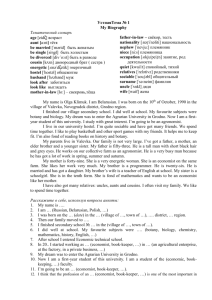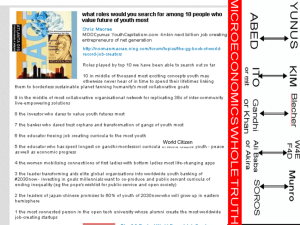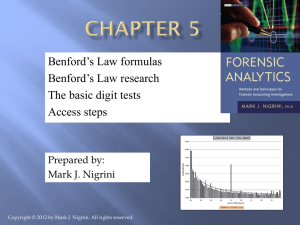
Free exchange: The scam busters | The Economist
Log in
World politics
Business & finance
Register
Economics
Page 1 of 3
Subscribe
Science & technology
Digital & mobile
Culture
Blogs
Debate
Events
The World in 2013
Topics A-Z
Newsletters
Multimedia
Print edition
Jobs
This site uses cookies. By continuing to browse the site you are agreeing to our use of cookies. Review our cookies information for more details
Free exchange
Comment (1)
Print
The scam busters
E-mail
Reprints & permissions
How antitrust economists are getting better at spotting cartels
Dec 15th 2012 | from the print edition
Like
0
0
Advertisement
THESE are nervy times for price-fixers. Banks that allegedly manipulated LIBOR, an interbank
interest rate, are awaiting their punishment. At $800 trillion, the market is the largest ever to
have been rigged. Fines to follow that imposed on Barclays in the summer are expected soon
for other rate-fixing banks; this week saw the first arrests connected with the LIBOR scandal.
Other cartels also have reason to be jumpy. The LIBOR case provides a good example of how
competition authorities can use price data to scan markets, quickly spotting even small-scale
collusion.
One way to identify dodgy prices is to use a splendidly counterintuitive phenomenon known as
Benford’s law. In a 1938 paper* Frank Benford, a physicist working for General Electric, pointed
out a pattern that occurs in large data sets. Across thousands of metrics, including 3,259
different population distributions and 741 sources of data on firms’ costs, he found that leading
digits (for example, the numbers “3” and “7” in 3,259 and 741, respectively) are not distributed
evenly, as you might expect. They follow a pattern: “1” is the most common and “9” the rarest.
For an example of why this should be, take an imaginary country with a population that doubles
every year, starting at 1m people. After a year with “1” as the leading digit, it hits 2m and the
leading digit changes to “2”. Fast forward another year and the population is 4m. But this means
the leading digits “2” and “3” have both passed by in less than a year, occurring for fewer days
than “1”. The pattern continues, with digits “4” to “9” spending progressively less time in the lead
position. After a little over three years the country’s population is 10m, so that “1” is the leading
digit again, where it stays for another year. And so on.
Benford’s law holds across a wide range of measures, including
naturally occurring data like populations (see left-hand chart) and
economic data like stockmarket returns. Such patterns can be
used to test economic data: if numbers have been manipulated to
give the appearance of randomness, the distribution of the digits
will almost certainly violate Benford’s predictions. Forensic
accountants have used the technique since the 1970s; a 2011
article showed that Greek economic data strayed further from
Benford distributions than those of any other euro-area country.
The test also works for LIBOR. In a 2011 paper Rosa AbrantesMetz of New York University’s Stern School of Business and Sofia
Villas-Boas and George Judge of the University of California,
Berkeley, examined LIBOR data over rolling six-month windows,
and found that LIBOR was far likelier than another benchmark
Recent Activity
Sergio Rebelo and Maria José Rebelo
recommended No short cuts. · about 2 months ago
Kate Foreman recommended Fuel me once. · about
2 months ago
The expanding middle
280 people recommended this.
In this section
As you were
RIPPP
108 people recommended this.
Big is not always beautiful
The lure of Chilecon Valley
Too big to jail
2,804 people recommended this.
The other mandate
To each, not according to his
needs
National trust
Skimming the froth
» The scam busters
Facebook social plugin
Most popular
Recommended
Commented
Reprints
Advertisement
http://www.economist.com/news/finance-and-economics/21568364-how-antitrust-econo...
12/13/2012
Free exchange: The scam busters | The Economist
Page 2 of 3
interest rate to depart from Benford patterns. A quick Benford test would have pointed to LIBOR
anomalies long before one of the colluding banks chose to own up.
Applying Benford’s law is an example of a “price screen”, a quick test that can help spot markets
where pricing patterns are odd and warrant further investigation. Although competition
authorities would ideally use detailed information on companies’ prices and costs to identify
collusion, since the ability to price far above cost is one measure of market power, information
on firms’ costs is hard to come by. Hence the value of tests that can be run quickly, across
various markets, using just the data at hand.
Take the pattern of prices over time. In a competitive market, theory suggests prices are set
close to firms’ costs and track those costs over time. Because costs differ between firms, prices
should as well. And since the prices of inputs are volatile over time, firms’ selling prices should
vary over time, too. Cartels change things. Prices rise far above costs, so small cost increases
can simply be absorbed. Once prices are being set collusively, a cartel may not want to raise
them further for fear of being caught. And even if a single cartel member does want to change
prices, agreeing this with all the others is time-consuming. Colluders don’t just raise prices; they
tend to smooth them, too.
In a 2006 paper Ms Abrantes-Metz, Luke Froeb of Vanderbilt University, John Geweke of the
University of Iowa and Christopher Taylor of the Federal Trade Commission used the price of
fish sold to American military bases in the late 1980s to backtest the theory. A cartel had
stitched up the market for cod, flounder, haddock and perch. When the cartel reigned, the prices
of perch were oddly stable. But when providers began to compete, prices dropped by 16% and
also became choppier, reflecting fluctuations in wholesale fish prices (see right-hand chart). A
new paper on a generic-medicines cartel in Mexico found something similar.
Clever watchdogs
All this suggests that one way to direct scarce antitrust resources is to set up automatic scans of
market prices, looking for excess price stability. Watchdogs are already moving in this direction.
In Italy a screen applied to pharmacies spotted a problem with baby-food prices. In America bids
for stimulus-funded projects are checked for signs of collusion. But like any statistical test, scans
for prices that are too stable can give “false positives”, implicating firms whose prices are flat for
innocent reasons.
The use of mapping data can refine these tests. In a 2012 paper Pim Heijnen and Marco Haan,
both of Groningen University, and Adriaan Soetevent of Amsterdam University analysed location
and price data for around 3,300 Dutch petrol stations. Their first step was to calculate the
distribution of petrol prices and label the most stable as suspicious. The next step was to use
location data and maps. If the cause of smooth prices was something innocent (lazy managers,
say) then suspect stations should have been randomly scattered across the country. But they
weren’t. Stable pricing patterns often appeared in clusters, suggesting local collusion. Using
data in this way promises much. The only problem is that as the watchdogs get better at
knowing where to look, cartels are bound to improve at disguising their activities.
Source
Latest blog posts - All times are GMT
The Economist: Digital highlights,
December 15th 2012
Newsbook - 42 mins ago
Travel adverts: Best on the air, but best in
the air?
Gulliver - 1 hour 31 mins ago
Monetary policy: Bernanke's two-footed
driving
Free exchange - 1 hour 55 mins ago
Daily chart: Fishy pricing
Graphic detail - 2 hours 16 mins ago
Demographics: Nonsense nonsense crisis
Free exchange - Dec 13th, 13:35
Czech politics: Jan Fischer's bid for the
presidency
Eastern approaches - Dec 13th, 12:10
Europe's banking union: A measly
triumph
Schumpeter - Dec 13th, 12:06
Remembering Ravi Shankar: The
godfather of world music
Prospero - Dec 13th, 11:46
Regulating the internet: Wicked groupedit
Babbage - Dec 13th, 06:49
“The Law of Anomalous Numbers”, by Frank Benford, Proceedings of the American Philosophy Society 78, 551-572 (1938)
“A Variance Screen for Collusion”, by Rosa Abrantes-Metz, Luke Froeb, John Geweke, Christopher Taylor, International Journal of Industrial Organisation,
Anniversary of the Nanjing massacre:
Ebbs and flows of history
Volume 24, Issue 3, May 2006, Pages 467–486
Analects - Dec 13th, 06:27
“Tracking the Libor Rate”, by Rosa Abrantes-Metz, Sofia Villas-Boas, and George Judge, Applied Economics Letters (2011)
More from our blogs »
“Fact and Fiction in EU-Governmental Economic Data”, by Bernhard Rauch, Max Göttsche, Gernot Brähler and Stefan Engel, German Economic
Review, Volume 12, Issue 3, pages 243–255
Products & events
“Screening for Collusion: A Spatial Statistics Approach”, by Pim Heijnen, Marco Haany and Adriaan Soeteventz, Tinbergen Institute Discussion Papers
(2012)
"Mexican Experience in Screens for Bid-Rigging", Carlos Mena-Labarthe, CPI Antitrust Chronicle (2012)
Stay informed today and every day
Get e-mail newsletters
Subscribe to The Economist's free e-mail
newsletters and alerts.
http://www.economist.com/news/finance-and-economics/21568364-how-antitrust-econo...
12/13/2012
Free exchange: The scam busters | The Economist
Page 3 of 3
Follow The Economist on Twitter
Subscribe to The Economist's latest article
postings on Twitter
Economist.com/blogs/freeexchange
from the print edition | Finance and economics
Like
Recommend
0
0
View all comments (1)
Follow The Economist on Facebook
See a selection of The Economist's articles,
events, topical videos and debates on Facebook.
0
Add your comment
Advertisement
Want more? Subscribe to The Economist and get the week's
most relevant news and analysis.
Classified ads
Full Professor in
Public and NonPr…
Jobs.economist.com
Principal Director
Jobs.economist.com
Economics Advisor
Jobs.economist.com
About The Economist Media directory Advertising info Staff books Career opportunities Subscribe Contact us Site index
Copyright © The Economist Newspaper Limited 2012. All rights reserved. Accessibility Privacy policy Cookies info Terms of use
http://www.economist.com/news/finance-and-economics/21568364-how-antitrust-econo...
[+] Site Feedback
Help
12/13/2012






